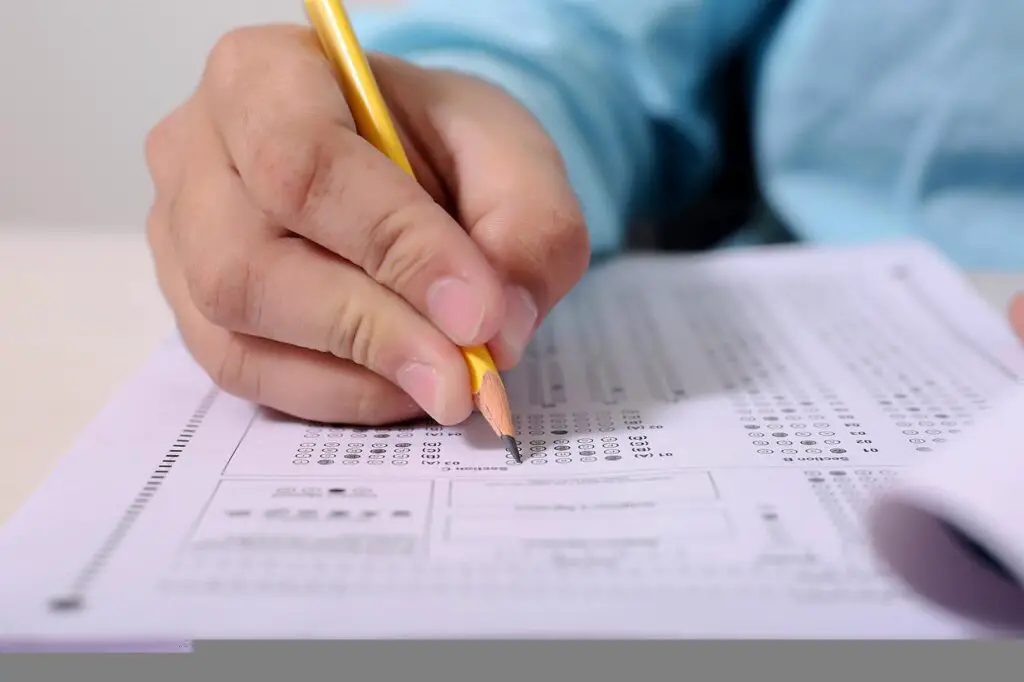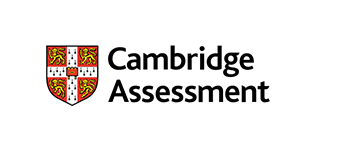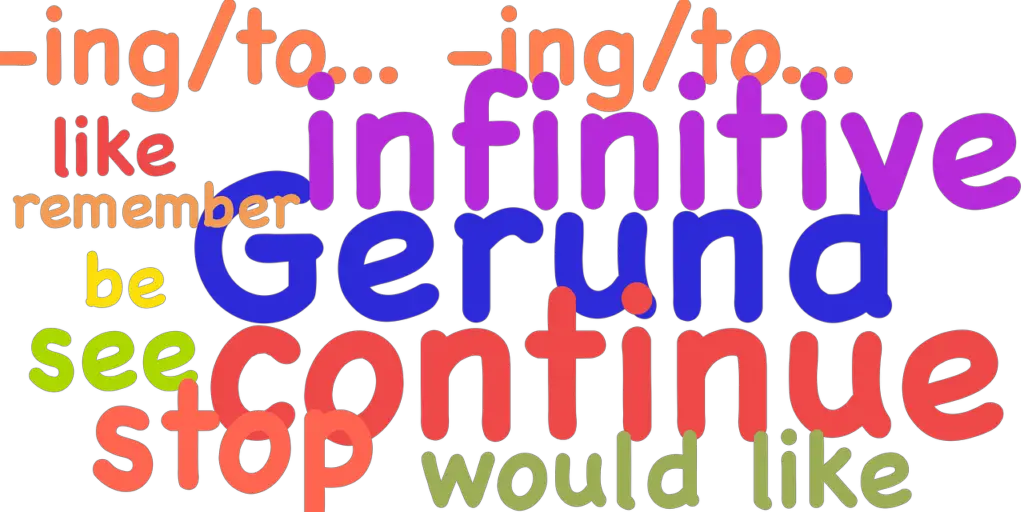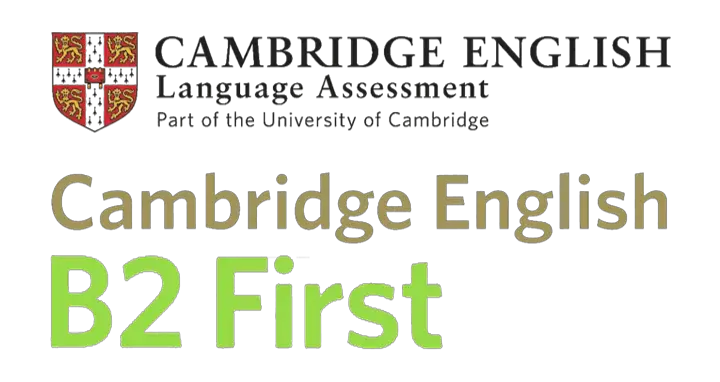The Cambridge B2 First Reading and Use of English paper is notoriously challenging. It’s the part of the exam all my students dread. And from a teacher’s point of view, they can be the most frustrating side of preparation.

But fear not. If you’re a teacher preparing students for the Cambridge B2 First, or even a student hoping to find an edge, this article is the right place to be. I’m going to walk you through each of the 4 Use of English and 3 Reading parts with specific techniques and study practices for success.
Looking for guides to all other parts of the Cambridge B2 First? I’ve got you covered. Follow the links for: Writing, Speaking and Listening.
First, we’ll look at the structure of the paper and how points are scored. Then we’ll look at techniques for the individual parts in turn and talk about what aspects of English to work on.
Before we start, I highly recommend you get a digital copy of the B2 First Handbook. It’s totally free and contains a lot of important information. You can get it HERE. The examples in this article all come from the official B2 First Sample Paper 1, which you can download from the Cambridge website.

What is the format and structure of the Cambridge B2 First Reading & Use of English paper?
The B2 First Reading & Use of English paper has a duration of 75 minutes and contains 7 parts.
Really, the paper is two separate exams combined together. The first 4 parts are Use of English (essentially vocabulary and grammar), while the last three parts are Reading.
The Use of English and Reading parts are scored separately. There are 36 points available for Use of English and 34 for Reading. Those scores are converted to a standard format and contribute 20% each to the overall B2 First grade which is broken down as follows:
- Reading: 20%
- Use of English: 20%
- Writing: 20%
- Listening: 20%
- Speaking: 20%
So this 75-minute exam paper is worth 40% of the overall score. To pass the whole exam and get the B2 certificate, a candidate must score an averate of 60%. That means students don’t need to get 60% in every paper, as long as they can compensate with good scores in others.
One important thing to note is the number of points each question earns in both the Reading and Use of English sections. Let’s take a look.
| Part | Points per question | No. questions | Total points |
|---|---|---|---|
| Part 1 (Use of English: Multiple-choice cloze) | 1 | 8 | 8 |
| Part 2 (Use of English: Open cloze) | 1 | 8 | 8 |
| Part 3 (Use of English: Word formation) | 1 | 8 | 8 |
| Part 4 (Use of English: Key word transformation) | 2 | 6 | 12 |
| Part 5 (Reading: Multiple choice) | 2 | 6 | 12 |
| Part 6 (Reading: Gapped text) | 2 | 6 | 12 |
| Part 7 (Reading: Multiple matching) | 1 | 10 | 10 |
The table shows parts 4, 5 and 6 have only 6 questions. But don’t think those parts are less important, because each question is worth two marks, so they’re actually the parts where most points are at stake.
Now let’s dig into the parts themselves.
Part 1 – Use of English: Multiple-choice cloze
The first part of the exam looks like a standard multiple-choice gap fill. The text is relatively short and could be about anything. It has a focus on vocabulary, particularly knowing the distinctions between words with similar meanings, and knowing phrasal verbs, fixed phrases and collocations.
Some questions require students to pick the correct word based on subtle differences in meaning, taking into account the context of the sentence. Here’s an example from the official Sample Paper 1.
People who research their family history often ………….. that it’s a fascinating hobby.
A. Describe
B. Define
C. Remark
D. Regard
All 4 options are to do with saying something in a certain way. Students have to identify “remark” as the most accurate choice.
Other questions require careful attention to the words before and after the gap, like in this example:
Tracing your family history can also ………….. in learning about your roots and identity.
A. Cause
B. Mean
C. Result
D. Lead
Students should pay attention to the “in” after the gap. “In” usually collocates with “result” and not any of the other words.
How to study for Part 1
- Broaden general vocabulary, especially abstract verbs.
- Understand and identify a number of phrasal verbs.
- Learn collocations as well as individual words. They need to know “result in” as well as “result”.
Lots of vocabulary is needed to succeed in this part. Fortunately, I have a fantastic guide to quickly and effectively boosting vocab memorisation. Check it out here: Best Method to Improve EFL/ESL Students’ Vocabulary: 9 Steps.

Part 2 – Use of English: Open cloze
Part 2 looks a lot like part 1, with one major difference – it’s not multiple choice. Students must come up with their own word to fit in the gap. They must write only ONE word, and it must be spelled correctly.
Here, grammar and vocabulary are both important. Articles, auxiliary verbs, pronouns, prepositions, connectors and verb forms may be tested. Phrasal verbs and fixed phrases will also appear.
In short, we’re looking at “glue” words rather than the advanced vocabulary we saw in part 1. Let’s look at some examples from the sample paper.
I’d never seen anyone riding a motorbike using just the back wheel before and I was ………….. impressed I went home and taught ………….. to do the same.
The answers here are “so” and “myself”. An adverb (so) and a pronoun (myself). These are not high-level vocabulary like “remark”, but the challenge comes from seeing patterns in the sentence.
People often think that my work is very dangerous, but, apart ………….. some minor mechanical problem happening occasionally during a stunt, nothing ever goes wrong.
In this question, to get the right answer, “from”, students must know that “apart” is usually followed by “from” and not “to”, “of”, or any other preposition.
There is almost always one question that requires the student to use a relative pronoun (which, when, where, who, that, etc.).
The Le Mans race track in France was ………….. I first saw some guys doing motorbike stunts.
How to study for Part 2
- Read a lot of English text and get to know common grammatical patterns.
- Study relative pronouns.
- Learn collocations/phrasal verbs as well as individual words. They need to know “apart from” as well as “apart”.
Part 3 – Use of English: Word formation
Another text with gaps to fill. This time, vocabulary is important, but instead of picking the right word, it’s about transforming it to the right word type.
Students get given a word, for example “inform”, and, depending on the context of the sentence, they have to write the correct form of it: informed, informer, information, informative, uninformed, etc.
Here’s an example from the sample paper.
China is currently the largest ………….. (PRODUCT) of garlic.
Students have to transform “product” into “producer”.
Typical questions are VERB -> NOUN or the reverse. Some include adjectives and adverbs too.
The trick is knowing what type of word you should put in the space. In the example, students could look at “largest” which is a superlative adjective. What comes after an adjective? A noun. They can look at “PRODUCT” and see it is already a noun, but it doesn’t make sense, so they can convert it to “producer”.
Students should also be aware of negative prefixes like “un-” or “dis-“. The context of each sentence should tell them whether they need to use one of these prefixes. Hint: there’s almost always at least one question like this!
Here’s a good example.
The only ………….. (ADVANTAGE) of this truly amazing food is that the strong and rather ………….. (SPICE) smell of garlic is not the most pleasant!
How to study for Part 3
- When learning vocabulary, learn different forms of the word at the same time.
- Learn negative prefixes of words that have them (like “disadvantage” and “uninformed”).
- Analyse word patterns to identify which type of words often go together (e.g. adjectives before nouns, adjectives after adverbs like “rather” and “very”, etc.)
Part 4 – Use of English: Key word transformation
For most students, this is the most difficult part of the whole Cambridge B2 First exam. It’s a real grammar challenge. However, there are some ninja tips and tricks which help get a good mark, or at least limit the damage.
This is the first part where each question gets two marks. There are six questions, but for each you can get a maximum of two marks, and most importantly, you can get one mark for a partially correct answer.
Each question starts with a sentence. Then, students get an incomplete sentence and an obligatory word. They must complete the second sentence to mean the same as the first, using a maximum of 5 words, including the obligatory one in its exact form.
If that sounds confusing, let’s look at an example from the sample paper.
A very friendly taxi driver drove us into town.
DRIVEN
We …………………………………………….. a very friendly taxi driver.
The correct answer is, of course, “We were driven into town by a very friendly taxi driver.”
In this case, the student writes “were driven into town by”. That’s five words, and it uses the given word “driven” without changing it at all.
Students would get 1 point for writing “were driven” and a second point for “into town by“.
You may notice that this is a transformation from active to passive. This kind of thing is typical for part 4.
Along with passive-active, here are some other common question types:
- Direct speech to reported speech
- Use of “so that” and “such that”
- Sentences using “as long as” as a conditional
- Modal perfects (must have, should have, etc.)
There’s a fair amount of variation, so you can’t prepare for all questions. But if you work on these common ones, students can definitely pick up some extra points.
How to study for Part 4
- Practice active-passive and direct-reported speech.
- Get familiar with “so that”, “such that”, “as long as”, and modal perfects
- Do lots of this kind of question. Getting accustomed to the question style and rewording sentences is just as important as grammar knowledge.
Grammar is one of the hardest parts of English, and often the most boring. If you want to take your private students to the next level with grammar, check out my guide: Teaching EFL/ESL Grammar: A guide for private tutors

Part 5 – Reading: Multiple choice
Now we’re onto the Reading part of the paper, and here the amount of text on the exam sheet goes up dramatically, as you would expect.
Part 5 is a standard multiple-choice reading comprehension in which students read the text and answer questions with A, B, C or D. There are 6 questions, and each is worth two points. You cannot score one point here. It’s either right (2) or wrong (0).
In most cases, there are 6 paragraphs in the text, and each question refers to its corresponding paragraph in order. Occasionally there are 5 or 7 paragraphs, but the questions don’t jump forwards and backwards in the text.
Questions rarely look for specific information. The Handbook says part 5 tests understanding of “opinion, attitude, purpose, main idea, detail, tone, implication and gist“. It’s big picture stuff. For example:
We live on the island of Hale. It’s about four kilometres long and two kilometres wide at its broadest point, and it’s joined to the mainland by a causeway called the Stand – a narrow road built across the mouth of the river which separates us from the rest of the country. Most of the time you wouldn’t know we’re on an island because the river mouth between us and the mainland is just a vast stretch of tall grasses and brown mud. But when there’s a high tide and the water rises a half a metre or so above the road and nothing can pass until the tide goes out again a few hours later, then you know it’s an island.
In the first paragraph, what is Caitlin’s main point about the island?
From the official Sample Paper 1
A. It can be dangerous to cross from the mainland.
B. It is much smaller than it looks from the mainland.
C. It is only completely cut off at certain times.
D. It can be a difficult place for people to live in.
Notice there’s quite a lot of high-level vocabulary: broadest, causeway, vast stretch, high tide.
Your students may know some of the vocab, but they’re not expected to recognise every single word. They’re being tested on understanding general ideas.
A great strategy is for students to underline parts of the text that give concrete evidence for the possible options. If they can’t find any, then it can’t be that option.
For example, looking at option A, I’d get students to find anything that relates to danger, searching for related words like “unsafe” or “precarious”. There aren’t any.
However, for option C, “nothing can pass until the tide goes out again a few hours later” is good evidence for the island being cut off at certain times.
How to study for Part 5
- Read real English. A lot.
- Practice identifying key phrases and sentences that transmit a particular idea.
- Summarise paragraphs after reading them. What was the purpose or message the writer was conveying> Do this for exam questions and real life texts.
Looking for great reading material for adults to practice for the B2 First? Head to my list of 9 Superb Novels to Boost Adult EFL/ESL Reading Skills.
Part 6 – Reading: Gapped text
Another part with six questions each worth 2 points (again, you can’t get 1 point for a partial answer). The trouble with this part is if you get one question wrong, it can have a chain reaction on the others.
It consists of a relatively long text with 6 spaces where a sentence is missing. Students are given 7 sentences (A-G) and have to choose which sentence would fit in each of those missing spaces.
Notice: 6 spaces, 7 sentences. That means one sentence will be left over.
In this example, I’m not going to write all 7 answers, just to avoid it getting overly cluttered. I’ll just pick the most likely ones to demonstrate my point. If you want to see the full thing, I urge you to check out the sample paper itself.
Over the course of my dancing life I worked my way through at least 10,000 ballet classes. I took my first at a school of dance at the age of seven and my last 36 years later at the Royal Opera House in London. In the years between, ballet class was the first thing I did every day. It starts at an early age, this daily ritual, because it has to. ……………………… But for a ballet dancer in particular, this lengthy period has to come before the effects of adolescence set in, while maximum flexibility can still be achieved.
A. Through endless tries at the usual exercises and frequent failures, ballet dancers develop the neural pathways in the brain necessary to control accurate, fast and smooth movement.
B. The ballet shoe offers some support, but the real strength is in the muscles, built up through training.
C. It takes at least a decade of high-quality, regular practice to become an expert in any physical discipline.
This part is hard. Even as a native English teacher I often find myself having to read things through several times before I figure it out. But I’ve found a great strategy for getting maximum results.
The strategy
Pay attention to demonstrative pronouns (this, those, that, these), pronouns (especially it, he and she), and any other connecting words in the sentences before and after the gap. They give big clues.
In the example above, I would identify “this lengthy period” in the sentence following the gap and ask myself “what lengthy period is it referring to?” With this in mind, the answer stands out as C, because it says “at least a decade”.
I wouldn’t just use that, though. I’d consider the “But” as a contrasting connector. It’s contrasting ballet dancers with something. What could that be? Well, that could be experts in any physical discipline, like in C.
Finding these cohesive devices is the best way to filter out sentences that have very similar meanings.
How to study for Part 6
- Read real texts and pay attention to demonstrative pronouns and other cohesive devices, trying to identify what they refer to.
- Practice predicting what might be in the spaces before looking at the answer sentences.
- Learn a range of connectors – contrastive, additive, causal and temporal.

Part 7 – Reading: Multiple matching
The final part of the exam! We’re back to one mark per question, and this time there are 10 questions.
The format is pretty straightforward. Students are given 4-6 short texts which are usually different people’s experiences or opinions about the same topic. Sometimes it’s different paragraphs from one long text. They’re labelled with letters.
For each of the 10 questions, students have to decide which paragraph the question is talking about. For example:
Which paragraph states how surprised the writer was at Duncan’s early difficulties?
In this example from the sample paper, there are 4 paragraphs, A, B, C and D. Students have to choose the correct one.
Finding specific information about opinions and ideas while discounting distracting information is the goal in this part. I get my students to underline the parts of the paragraphs which relate to the question. They must be able to find concrete information that confirms the answer.
In our example question, paragraph A includes this sentence, written from the writer’s perspective:
Such has been his rise to fame that it is with some disbelief that you listen to him describing how his career was nearly all over before it began.
This sentence clearly states that the writer was surprised (some disbelief) and refers to early difficulties (nearly over before it all began).
However, students may get distracted by similar vocabulary or ideas in other paragraphs. Take this from paragraph B where Duncan’s father is talking:
But I was still upset and surprised that no team seemed to want him.
The word “surprised” and the general idea of having difficulties may tempt students to choose this one. This kind of trap is common. In this paragraph, it is Duncan’s father who is speaking, so it isn’t the writer’s surprise. Nor does it refer directly to Duncan’s “early difficulties”.
Avoiding those traps and highlighting the correct information will lead to the right answer.
How to study for Part 7
- Practice underlining specific ideas and facts in text.
- Read lots of articles, reviews and opinion pieces from a variety of different people and try to find the language that separates their points of view.
- Practice scanning texts for specific information.
Conclusion
Since it carries 40% of the overall mark, success in the Reading and Use of English paper is crucial to passing the B2 First.
I’ve identified all the tricks and techniques I’ve discovered while preparing students for this exam over the years, but even with them, nothing is guaranteed.
In fact, the strategies are just a small part of what’s required to pass. What makes the difference is the students’ overall grammar, vocabulary and reading skills. If they’re lacking in these, they’ll struggle.
Of course you want them to be prepared for all the different types of questions and optimise their approach, but the main work should be done on improving their English in general.
That means reading a LOT, studying grammar in an engaging way, and really expanding vocabulary to include phrasal verbs, collocations and different word forms.
Check out my articles on how to prepare students for all the different parts of the Cambridge B2 First exam, as well as other guides on how to help them pass:
Teacher’s Guide to the Cambridge B2 First Listening Exam
Teacher’s Guide to the Cambridge B2 First Speaking Exam
Teacher’s Guide to the Cambridge B2 First Writing Exam
Best Method to Improve EFL/ESL Students’ Vocabulary: 9 Steps







